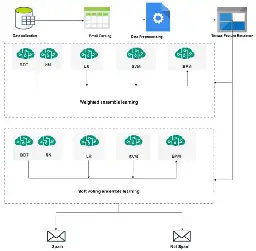An Effective Ensemble Approach for Preventing and Detecting Phishing Attacks in Textual Form
An Effective Ensemble Approach for Preventing and Detecting Phishing Attacks in Textual Form
Phishing email assaults have been a prevalent cybercriminal tactic for many decades. Various detectors have been suggested over time that rely on textual information. However, to address the growing prevalence of phishing emails, more sophisticated techniques are required to use all aspects of email...

Abstract
: Phishing email assaults have been a prevalent cybercriminal tactic for many decades. Various detectors have been suggested over time that rely on textual information. However, to address the growing prevalence of phishing emails, more sophisticated techniques are required to use all aspects of emails to improve the detection capabilities of machine learning classifiers. This paper presents a novel approach to detecting phishing emails. The proposed methodology combines ensemble learning techniques with various variables, such as word frequency, the presence of specific keywords or phrases, and email length, to improve detection accuracy. We provide two approaches for the planned task; The first technique employs ensemble learning soft voting, while the second employs weighted ensemble learning. Both strategies use distinct machine learning algorithms to concurrently process the characteristics, reducing their complexity and enhancing the model’s performance. An extensive assessment and analysis are conducted, considering unique criteria designed to minimize biased and inaccurate findings. Our empirical experiments demonstrates that using ensemble learning to merge attributes in the evolution of phishing emails showcases the competitive performance of ensemble learning over other machine learning algorithms. This superiority is underscored by achieving an F1-score of 0.90 in the weighted ensemble method and 0.85 in the soft voting method, showcasing the effectiveness of this approach.